.425 Westley Richards "Rifle System"
A Century Ahead and Better Than Most
other By: Terry Wieland | January, 26
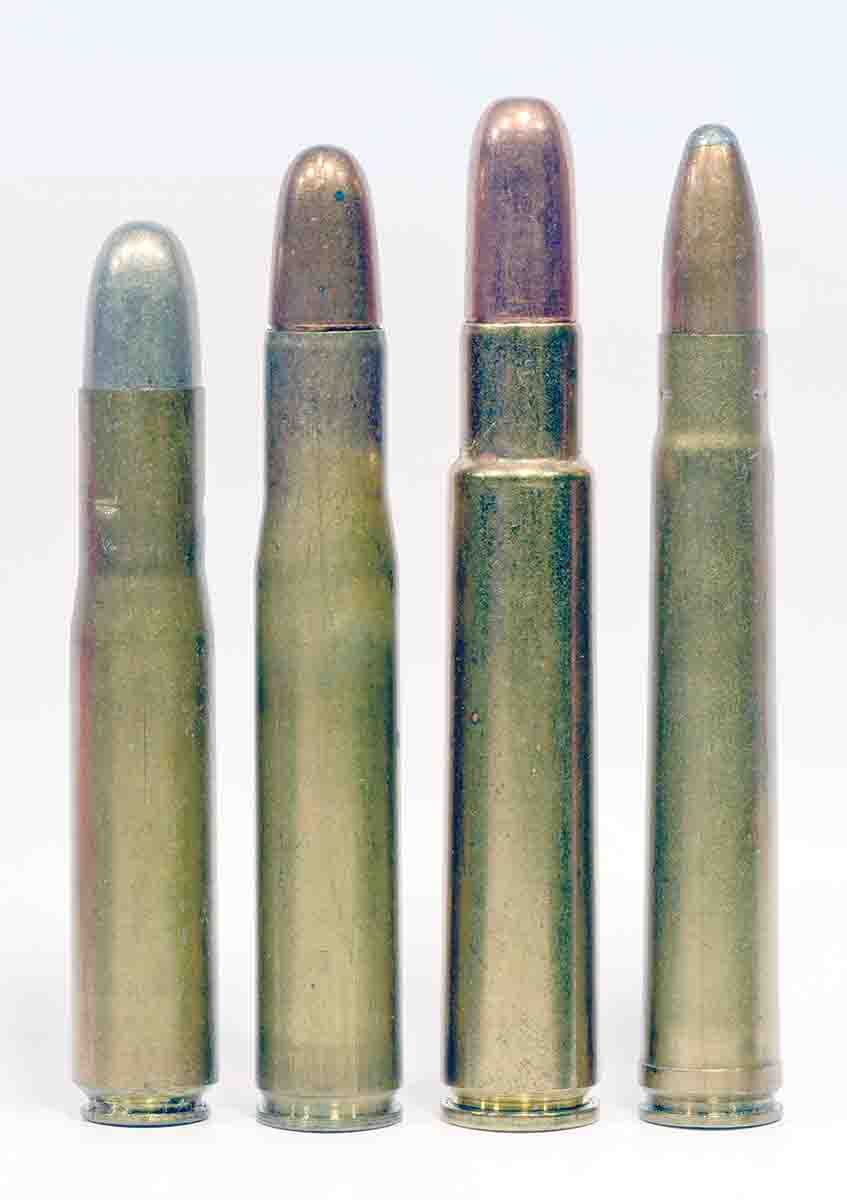
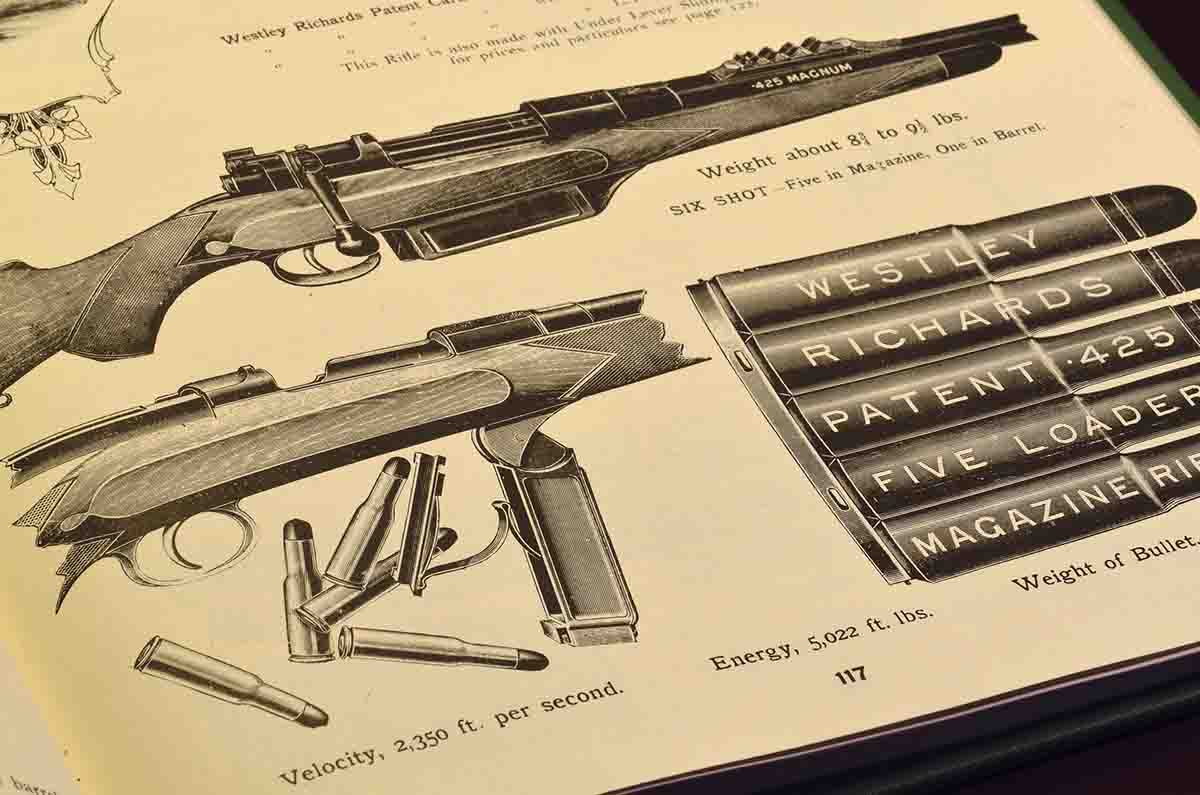
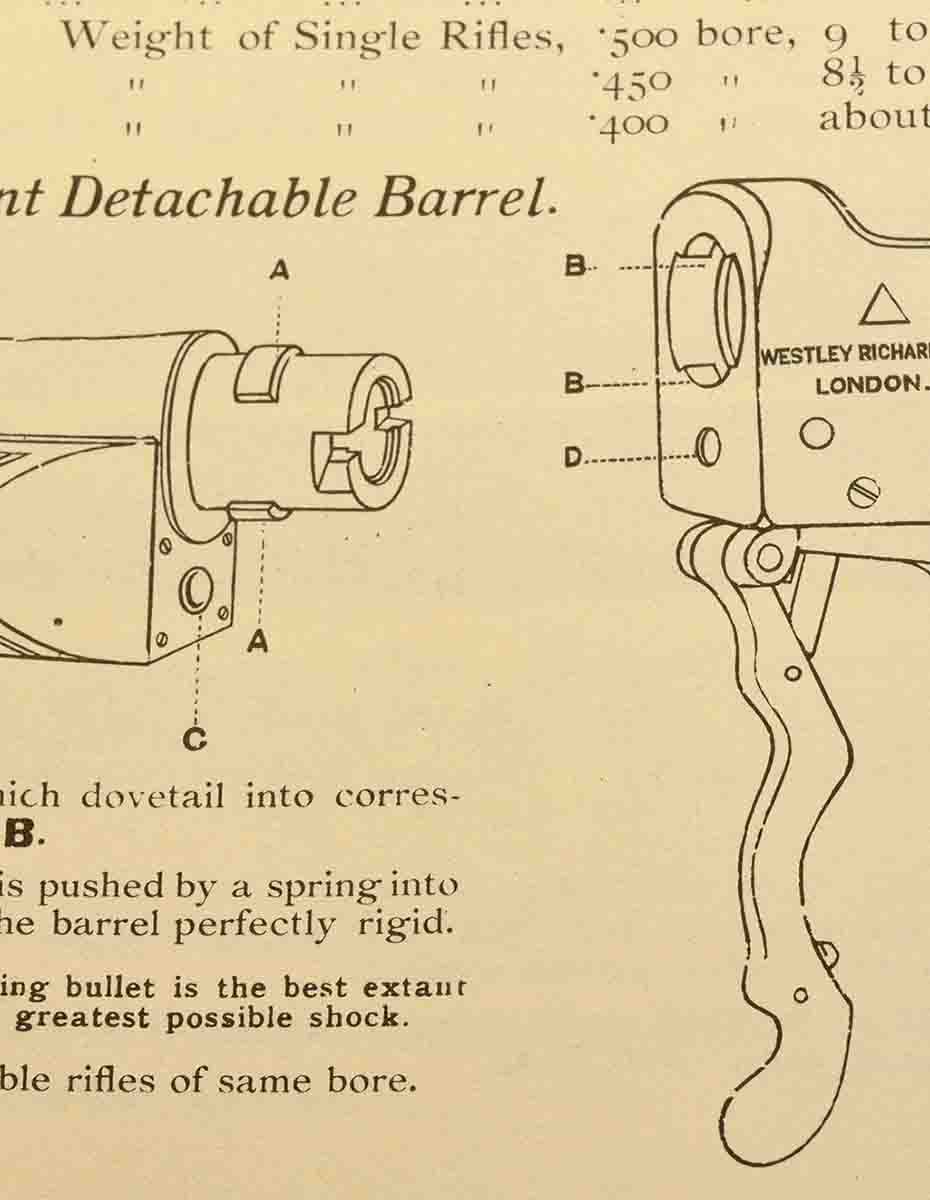
First, the .425 Westley Richards cartridge was what the British referred to as a “large medium-bore.” Considering their largest rifle cartridge was the .600 Nitro Express, to say nothing of 8-, 4- and 2-bore elephant guns, their ideas of large and medium were different than ours. For elephant hunters, large bores began at .450.
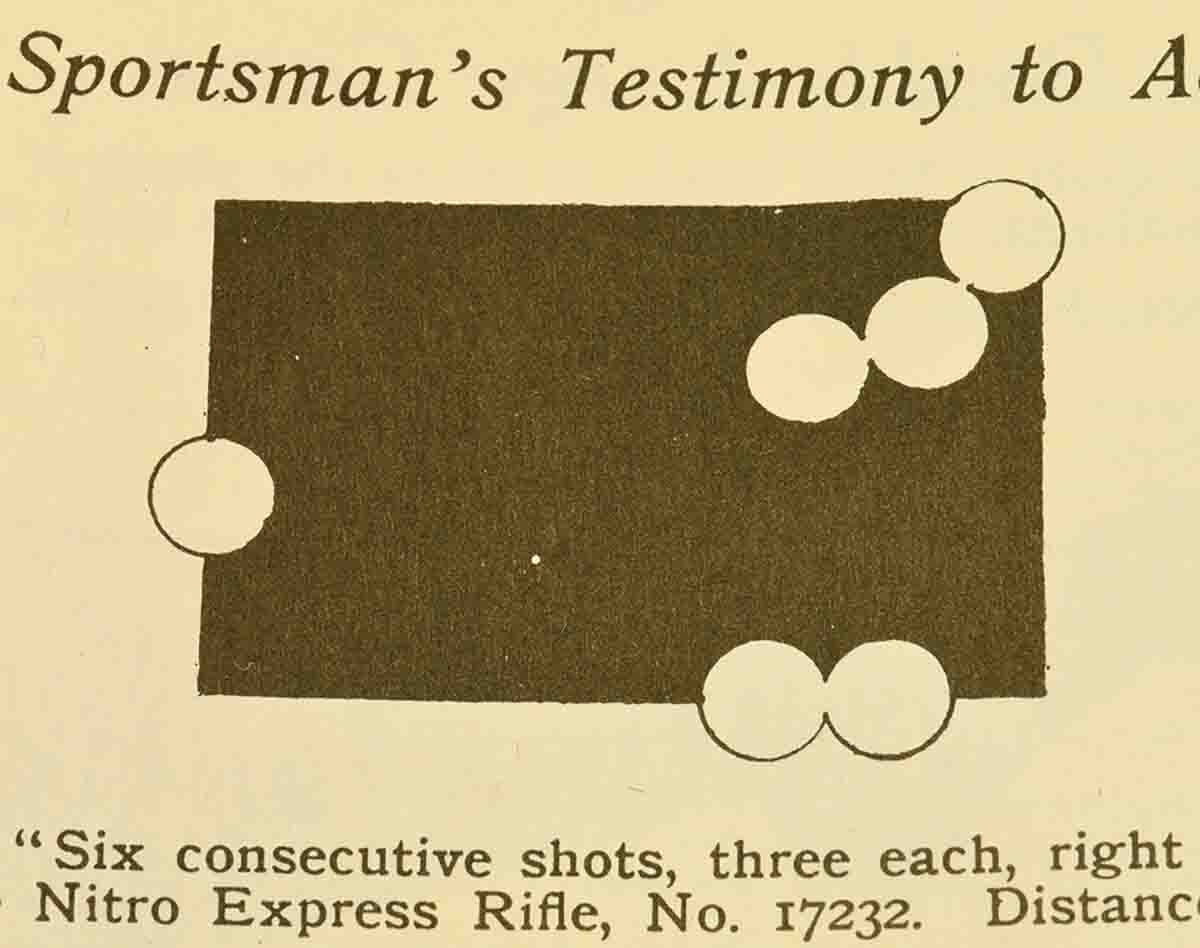
Since the introduction of the Mauser 98 a decade earlier, English gunmakers had all put considerable effort into developing cartridges that would be suitable for the largest and most dangerous game yet fit into a magazine rifle. Although John Rigby, Mauser’s London associate, had persuaded Oberndorf to produce a magnum-length action as early as 1900, some riflemakers (including W.J. Jeffery and Holland & Holland) preferred to work with the more common standard-length action. In the case of Westley Richards, there was another reason for eschewing the magnum in favor of the military model, which we shall get to in a moment.
Although most English gunmakers offered rifles, only a handful were known as rifle specialists: H&H, Rigby, George Gibbs and Jeffery, as well as Westley Richards. All but Gibbs introduced new “large medium-bores” between 1909 and 1912. In 1909, Westley Richards introduced its .425 and Jeffery the .404; two years later, Rigby came out with the .416, and a year after that, Holland & Holland introduced the .375 H&H. All four cartridges went on to have illustrious careers, and to some extent, all are still available today.
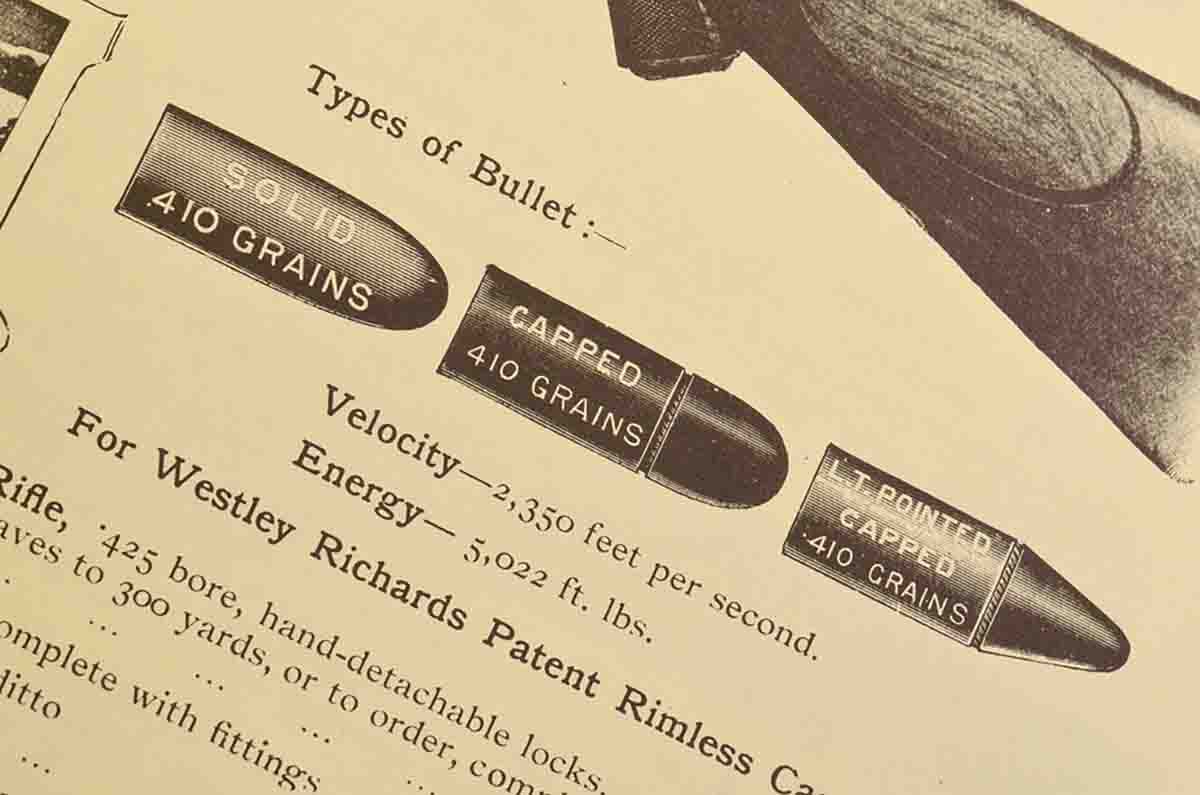
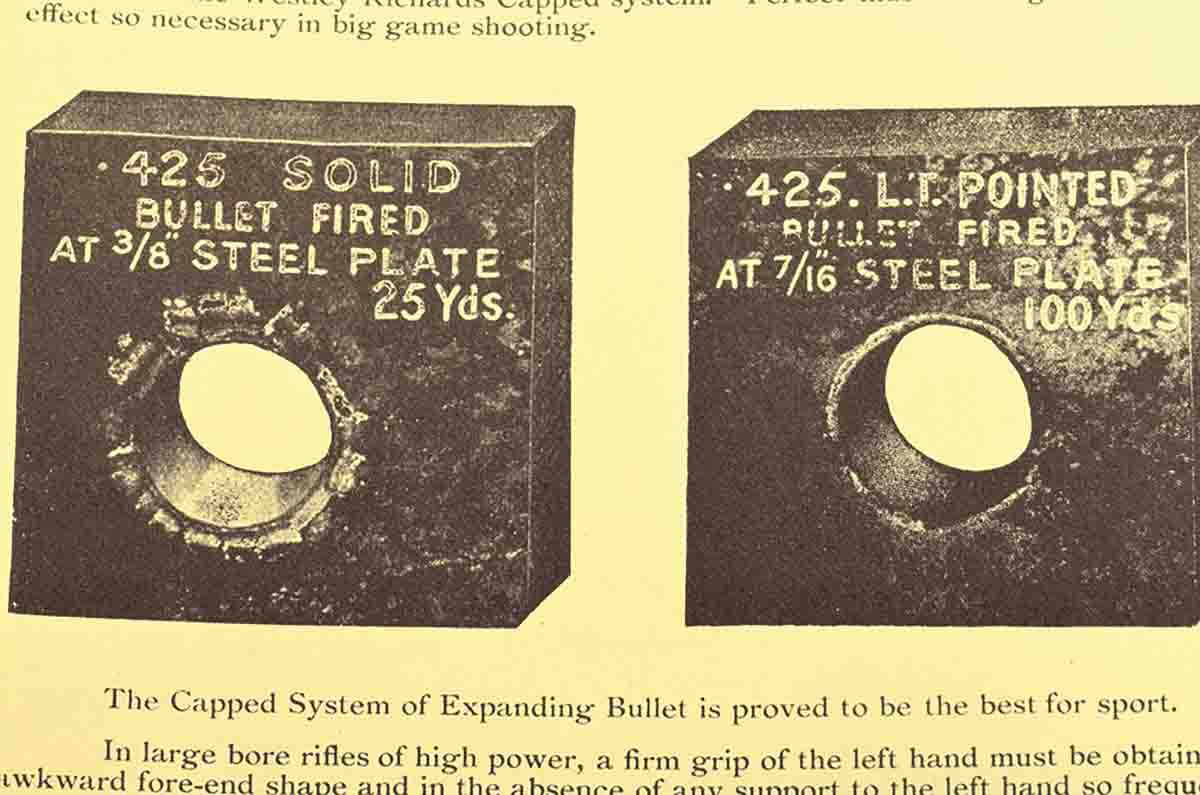
The cartridge itself had a long bottleneck to hold bullets firmly, a distinct taper to ensure ease of feeding, and – most notably – a rebated rim. It was the first major cartridge to use this design, in which the rim is smaller in diameter than the base of the cartridge. It was designed this way to fit the standard military Mauser 98 bolt face.
Military Mauser 98s were designed for fast loading using stripper clips that fit into a slot in the rear of the action and allowed five rounds to be “stripped” into the magazine with a sweep of the thumb. There was a thumb notch on the left side of the action wall to accommodate this. By making the .425 with a rebated rim that would fit into a stripper clip, Westley Richards was able to utilize the existing features of the cheap and readily available military Mauser action to create a magazine rifle for dangerous game that was faster to load than any other.
As well, Westley Richards designed a special five-round hinged box magazine. With one round in the chamber, this gave a .425 user six rounds, more than any comparable rifle available at the time. With its quick-release mechanism, the magazine allowed the hunter to switch ammunition in a heartbeat. Although the company sold its ammunition already fitted in clips, the user could switch cartridges around according to bullet type, to load them in any order preferred. This all added up to an unprecedented level of speed, versatility and power.
The Westley Richards bolt-action rifle was a masterpiece of the English gun trade. Fitted with a five-leaf express rear sight regulated to 500 yards, the .425 could reach beyond any reasonable hunting range. It was available in a takedown model for compact storage.
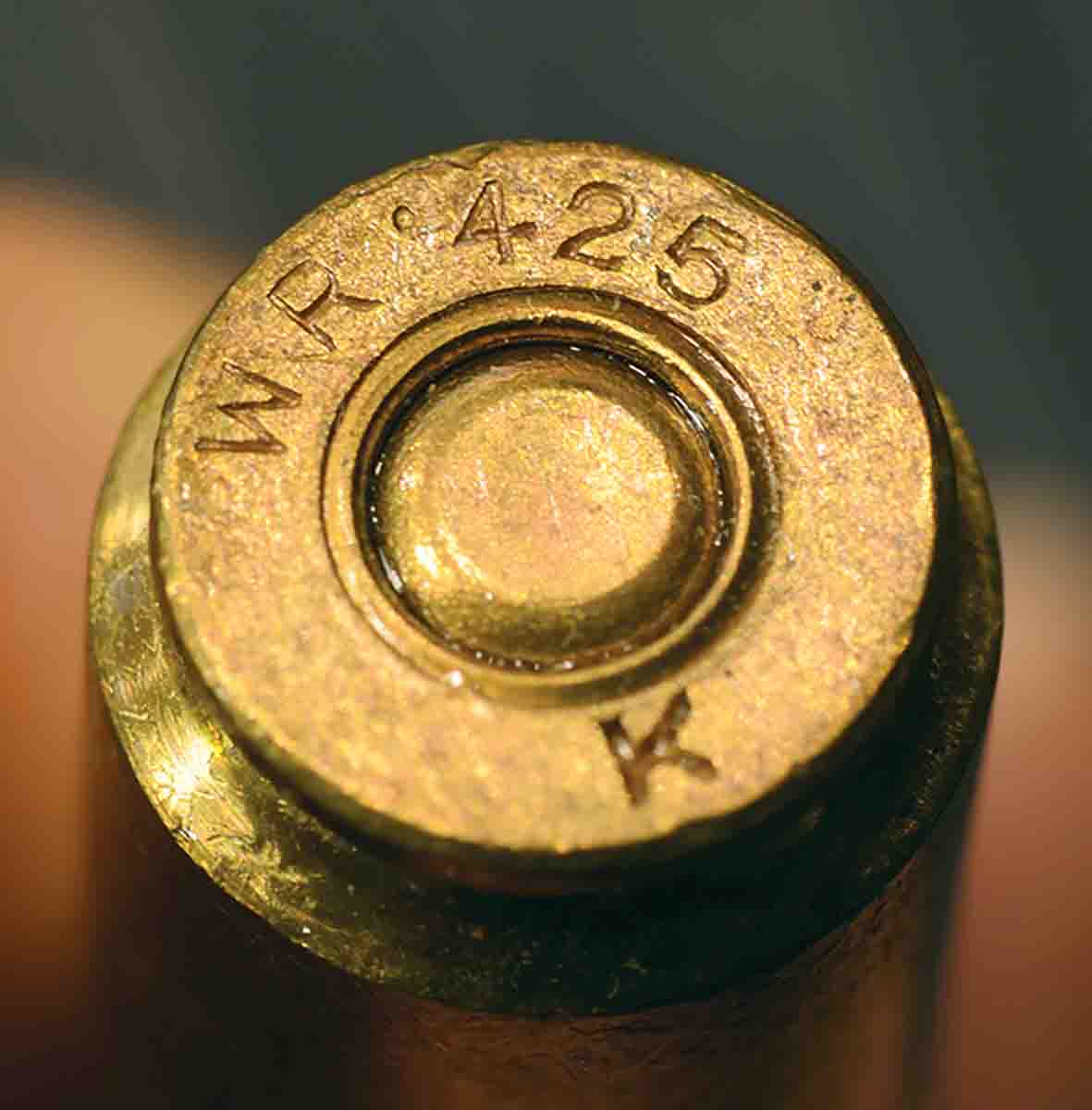
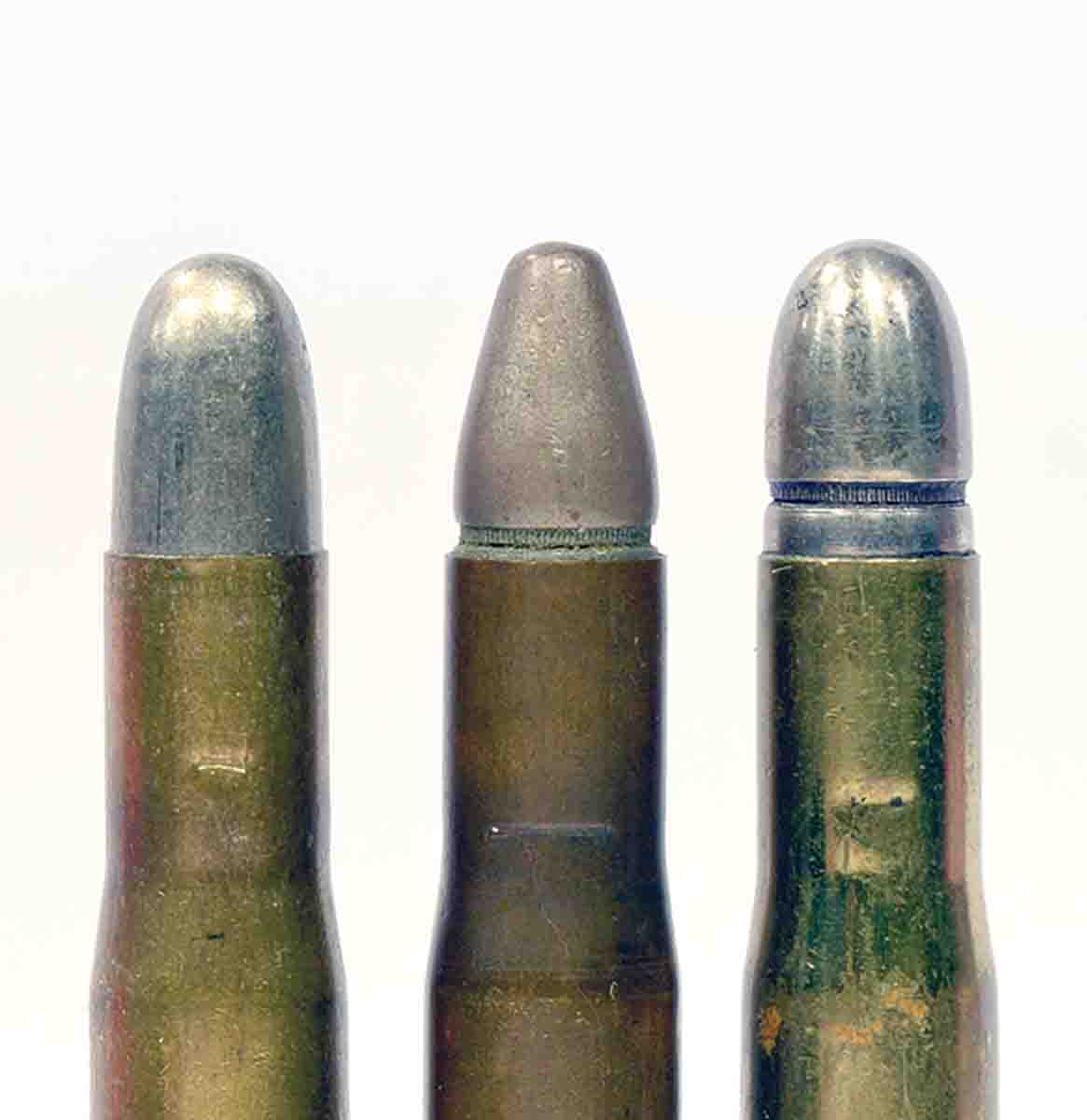
Forty years later, assessing the worth of the .425 Westley Richards cartridge, professional hunter John “Pondoro” Taylor praised the round but condemned the rifle on two counts. First was its barrel length, which he considered awkward to the point of being dangerous when hunting at close quarters or in thick brush. He also found that the spring in the five-round magazine was not strong enough to lift the last cartridge into position consistently and suggested anyone buying a Westley Richards order the rifle with a shorter barrel and a three-round magazine, which would be more than adequate. How much the long barrel eroded sales is impossible to say, but it is notable that the .425 lagged far behind its three rivals.
The cartridge was not adopted by other makers to nearly the same degree as the other three. This is probably because of difficulty in making it feed and function properly with its rebated rim. Professional hunter Terry Irwin, in his memoirs, mentions feeding problems with bolt actions other than those from Westley Richards. As the cartridge is pushed forward to chamber, the nose tilts up and the base drops. This makes it all too easy for the bolt face to ride over the rim, creating a serious jam, especially when the bolt is worked forcefully in the heat of the moment.
Westley Richards may have mastered the feeding question, but others had not. For most, it was far simpler to chamber a rifle in .404 Jeffery, which quickly became a standard of the trade with ammunition available from Kynoch.
The other two rifles in the Westley Richards “system” were its famous “detachable-lock” (what we call a drop lock) double and its Farquharson-action falling block single shot. The double was available as a standard or a drop lock, with either a single trigger or double triggers. Westley Richards was noted for outfitting its double rifles with single triggers, something most other riflemakers avoided, but its worked well. Elephant hunter James Sutherland had two Westley Richards .577 Nitro Express rifles with single triggers, one of which was later used by professional hunter Tony Henley, hunting buffalo and elephant on control. The rifles performed flawlessly.
The single shot was available as either a solid-frame or takedown, using Westley Richards’s patented takedown design. Altogether, no matter taste or preference in rifles, Westley Richards could outfit a hunter with a .425 (or multiple .425s) to suit.
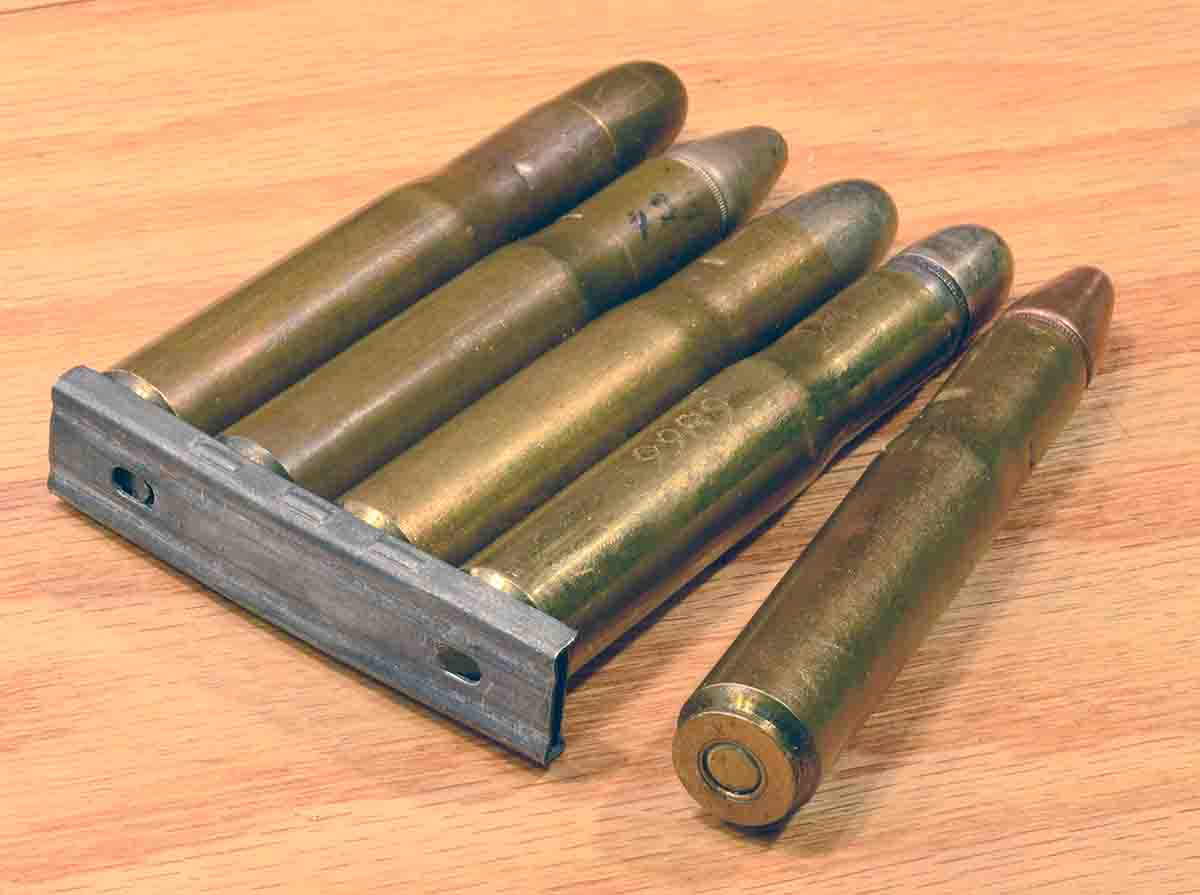
Ammunition for the .425 was no less varied in bullet designs if not weights. In managing director Leslie Taylor, Westley Richards had one of the foremost ballisticians and bullet designers of the period. In the early years of the nitro-express era, riflemakers and ammunition companies struggled to design bullets that would withstand the higher velocities, hold together on impact, expand where desired and penetrate.
Taylor patented several different designs, including one called the “LT.” This was a spitzer design with a separate bronze tip that was driven back into the bullet on impact and initiated expansion. This approach was later adopted by Remington in the U.S. with its Bronze Point bullet, by Dominion in Canada with the Sabre Tip, by Nosler (Ballistic Tip) and, more recently, just about anyone who makes premium hunting bullets.
Taylor and Westley Richards were the first and made it famous. They also had a bullet called the Copper Capped that looked very much like a standard solid, except that instead of a tough copper or steel jacket, a thin, hollow copper cap protected the lead nose. It not only kept it from deforming due to rough handling or pounding by recoil in a magazine box, but it also helped it flatten uniformly on impact.
The .425 was loaded with a variation on these two called the LT Pointed Capped, another expanding design. Finally, of course, there were conventional solids.
John Taylor was positively effusive in his praise of the expanding bullets, calling them the “best expanding bullets extant.” He added that the Uganda game department had adopted the .425 for its elephant-control officers, and it worked superbly.
All these bullets weighed 410 grains, with a muzzle velocity of 2,350 fps – virtually identical to the ballistic performance of the later .416 Rigby. Because ammunition was offered in only one bullet weight, sight regulation was greatly simplified. With muzzle energy of 5,010 foot-pounds (ft-lbs), the cartridge outstripped the .404 Jeffery by a good margin (400 grain, 2,150 fps, 4,020 ft-lbs) and was adequate for elephant under all but the direst circumstances.
Bullet diameter of the .425 was actually .435 (The British designate cartridges by bore, not groove, diameter.) and is the only cartridge ever to use that size bullet. Measuring five actual bullets of five different types, diameters range from .428 all the way up to .435, with no two alike.
Some have criticized them for not using a standard .416, but in 1909, the .416 didn’t exist. If anyone should have standardized, it was Rigby. The .404 Jeffery, which appeared the same year as the .425, uses a .422 bullet. Perhaps Westley Richards chose .435 because it was as close as it could get to .450, which, though highly effective, was prohibited in India and the Sudan as of 1907.
Because Westley Richards manufactured its own bullets, the company wasn’t worried about bullet availability. Such is not the case today. Only Woodleigh makes .435 bullets (a soft and solid, both 410 grains). For practice ammunition, cast bullets for the .43 Spanish are readily available and can easily be sized down from .439 to .436.
Don Heath, former head of the Zimbabwe game department, says they used to make bullets for their .425 rifles by turning solids on a lathe from brass bar stock, and they performed on elephant very well. A simpler approach is to buy .458 solids of naval bronze and turn them down on a lathe.
Brass is more difficult to find, but since Kynamco loads .425 Westley Richards ammunition, cases must be available somewhere. If it proves unobtainable, it can be remanufactured from .404 Jeffery brass. This consists of turning down the rim, forcing the case into a sizing die, trimming to length and blowing out. Or, it can be made (with more difficulty) from rimmed .450/ .400 brass. Both .404 and .450/.400 brass is readily available, at least by comparison with factory .425.
Having heaped praise upon the .425, truth be told, for a big-game hunter with little interest in rifles and cartridges, there is nothing to be gained in buying a .425 Westley Richards. For the rifle enthusiast, cartridge experimenter and ballistic masochist, however, there is every good reason to seize a bolt-action, single-shot or double rifle should one come along.
First, there is the undoubted thrill of shooting a rifle that was, for a short time, the most powerful magazine rifle in the world. Second, there is the pleasure of using the very first “rifle system,” hand-made to the impeccable standards of England’s Edwardian gunmakers. And, you can ask yourself, after 105 years and who knows how many new cartridges, have we really come so very far?

